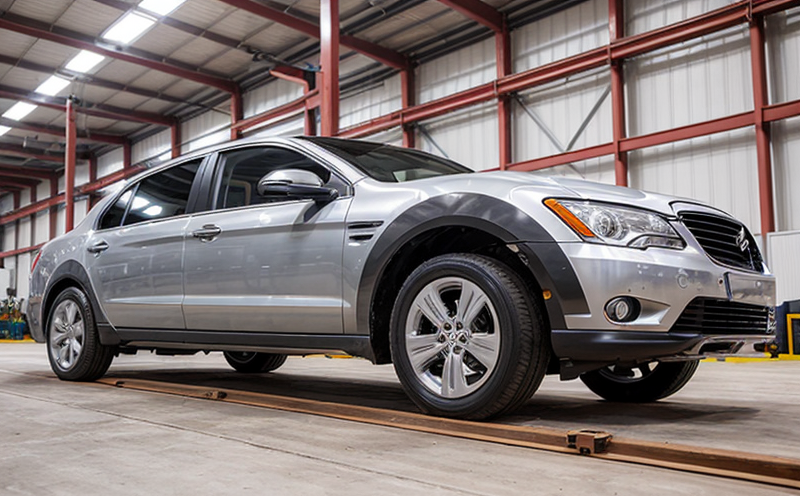Surge Immunity for Lighting Equipment Test
In industrial manufacturing and processing, ensuring that lighting equipment can withstand surge conditions is crucial. Surge immunity testing evaluates the ability of electrical and electronic products to function correctly in environments where transient overvoltages may occur. This test is particularly important for manufacturers who need to comply with international standards and ensure product reliability.
The surge immunity test for lighting equipment is designed to simulate real-world conditions that can cause malfunctions or failures, such as lightning strikes, switching transients, and other electrical disturbances. Compliance with this test ensures that the equipment continues to operate safely and effectively under adverse conditions.
The testing process involves subjecting the lighting equipment to controlled surges of various magnitudes and frequencies. The apparatus used includes a surge generator capable of producing high-energy pulses that mimic real-world transient events. The specimen preparation typically consists of connecting the light fixture to the surge generator, ensuring that all connections are secure.
During the test, the lighting equipment is subjected to a series of voltage surges. The acceptance criteria for this test are based on international standards such as IEC 61000-4-5 and EN 50170. These standards define the specific surge levels that need to be endured by the light fixture without causing any functional failure or permanent damage.
The purpose of conducting surge immunity tests is not only about compliance but also about protecting end-users from potential hazards. By ensuring that lighting equipment can withstand these transient events, manufacturers reduce the risk of fires, electrical shocks, and other safety issues. This test helps in validating the robustness of the design against unexpected environmental conditions.
Real-world usage notes indicate that surge immunity testing is particularly important for outdoor fixtures or those installed in areas prone to natural disasters like hurricanes or earthquakes. The test ensures that even if a surge occurs due to an external factor, the lighting equipment remains operational and safe.
A quality manager or compliance officer would be interested in this service because it provides assurance that all products meet stringent industry standards. R&D engineers benefit from knowing whether their prototypes can handle extreme conditions without compromising performance. Procurement teams also find value in this test to ensure they are sourcing high-quality components for reliable end products.
Scope and Methodology
The scope of the surge immunity testing service includes evaluating lighting equipment under controlled conditions that simulate real-world transient overvoltages. The methodology involves using specialized equipment to generate high-energy pulses, which are then applied to the lighting fixture according to predefined parameters.
- Surge Generator: Used to produce the required levels of surge voltage.
- Lighting Fixture: The specimen to be tested, connected in a manner that simulates its intended use.
- Control System: Ensures accurate measurement and recording of test results.
The testing process follows international standards such as IEC 61000-4-5. The specimen is subjected to multiple surge events, each with different characteristics in terms of voltage level and duration. After the test, engineers analyze the performance data to determine if the lighting equipment meets the specified criteria.
The acceptance criteria for this test are based on the aforementioned standards. A successful outcome means that the light fixture can operate without any adverse effects after exposure to the defined surge conditions. This ensures that the product is reliable and safe for use in various environments, including those with high levels of electrical interference.
International Acceptance and Recognition
The surge immunity test for lighting equipment has gained widespread acceptance across numerous industries due to its stringent quality control measures. Many countries and organizations recognize the importance of this testing, making it a mandatory requirement in many product certification programs.
For instance, IEC 61000-4-5 is widely accepted globally as the standard for assessing surge immunity. Compliance with these standards not only ensures that lighting equipment meets local regulations but also opens up export markets to countries adhering to similar norms. This recognition fosters trust among consumers and stakeholders regarding product quality.
Manufacturers who adhere to international standards like IEC 61000-4-5 demonstrate their commitment to maintaining high-quality products that are safe and reliable for use in diverse environments. By meeting these stringent requirements, companies can build a reputation for producing dependable lighting solutions, which is crucial for gaining competitive advantage.
Competitive Advantage and Market Impact
- Innovation: Surge immunity testing encourages continuous improvement in product design. Manufacturers who invest in this service stay ahead of the curve by incorporating advanced technologies that enhance performance.
- Customer Satisfaction: Reliable lighting equipment leads to higher customer satisfaction, as users are assured that their products will perform consistently even under challenging conditions.
- Market Diversification: Adherence to international standards broadens market opportunities by allowing entry into new regions and sectors.
The surge immunity test for lighting equipment plays a significant role in fostering innovation within the industry. By pushing boundaries through rigorous testing, manufacturers can introduce more resilient products that stand out in competitive markets. This approach not only enhances brand reputation but also attracts customers seeking dependable solutions.
Customer satisfaction is directly linked to product reliability. Lighting fixtures that pass surge immunity tests are less likely to fail unexpectedly, thereby reducing maintenance costs and downtime. This translates into enhanced customer experience, which is key to building long-term relationships with clients.





